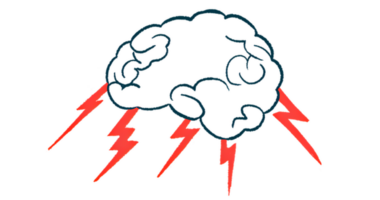Brain chemistry patterns differ in Parkinson’s, essential tremor
Study results may provide new insight into neurochemistry of motor disorders

Parkinson’s disease and essential tremor are associated with distinct signaling patterns of two key brain neurotransmitters, dopamine and serotonin, according to a new study. These two chemical messengers allow nerve cells to communicate.
Using machine learning, researchers analyzed the regulation of neurotransmitter systems during reward-based decision-making, a cognitive process of deciding actions by estimating potential gains and losses, in people with Parkinson’s or essential tremor.
“The data had been collected as long as eight years ago … but we came back at it with better tools and a fresh perspective — and finally saw what was there all along,” William “Matt” Howe, PhD, assistant professor at Virginia Tech and co-senior author of the study, said in a university news story.
The study, “Caudate serotonin signaling during social exchange distinguishes essential tremor and Parkinson’s disease patients,” was published in Nature Communications.
“Our combined results reveal disease-specific patterns of reward-evoked [neurotransmitter] release that may provide insight into the neurochemistry that underwrites these two prevalent motor disorders,” the researchers wrote.
Study builds on data from deep brain stimulation surgeries
The loss of dopaminergic neurons, the nerve cells that produce dopamine, is a hallmark of Parkinson’s disease. Disruptions in other neurotransmitter systems, including serotonin, also contribute to the disease symptoms.
Parkinson’s and essential tremor share common symptoms, most notably tremor, but tremors in Parkinson’s usually happen when the person is not intentionally moving, while essential tremor is marked by limb tremors during movement.
This study builds on previous data gathered during deep brain stimulation surgeries in 2017 and 2018, where neurosurgeons recorded brain activity in patients with Parkinson’s and essential tremor as they played a game of accepting or rejecting monetary offers. This was done during the part of the surgery when doctors already monitor brain signals to guide electrode placement, and the researchers focused on the caudate of the striatum, a brain region involved in decision-making and reward processing.
Rise in dopamine, decrease in serotonin seen in essential tremor patients
In this study, the researchers analyzed the data with a computational model to see how patients formed and adjusted their expectations, uncovering distinct chemical signaling patterns linked to each disorder
The computational model used reinforcement learning, which gradually enhances its ability to recognize patterns as it processes more data. It also employed a statistical tool that considers rewards and responses and simulates the best performance for a given task.
This opens a new window into how deeply human cognitive processes, like social evaluation, are shaped by disease.
In people with essential tremor, mismatches between what patients expected and what they received triggered a rise in dopamine and a decrease in serotonin levels. This reciprocal signaling, with one neurotransmitter rising as the other goes down, was not observed in people with Parkinson’s.
“It’s very powerful to link moment-to-moment changes in internal beliefs — here what a person expects from others — to measurable chemical signals in the brain,” said Dan Bang, PhD, associate professor at Aarhus University in Denmark and Fralin Biomedical Research Institute at the Virginia Tech Carilion School of Medicine, and a study author. “This opens a new window into how deeply human cognitive processes, like social evaluation, are shaped by disease.”
Although the researchers expected that dopamine would be the clearest difference between the two groups of patients, given the loss of dopaminergic neurons in Parkinson’s, serotonin best distinguished essential tremor from Parkinson’s disease.
“It wasn’t just that dopamine was disrupted, which was expected. It was that the normal back-and-forth between dopamine and serotonin was gone,” Howe said. “It’s not just one system being disrupted — it’s the lack of that dynamic interaction that turned out to be the clearest difference between Parkinson’s and essential tremor.”
The findings shed new light on serotonin’s role, according to the researchers.
“Together these findings elucidate a role for serotonin in the striatum, suggesting it encodes a protective action strategy that mitigates risk and modulates choice selection particularly following negative environmental events,” they wrote.








